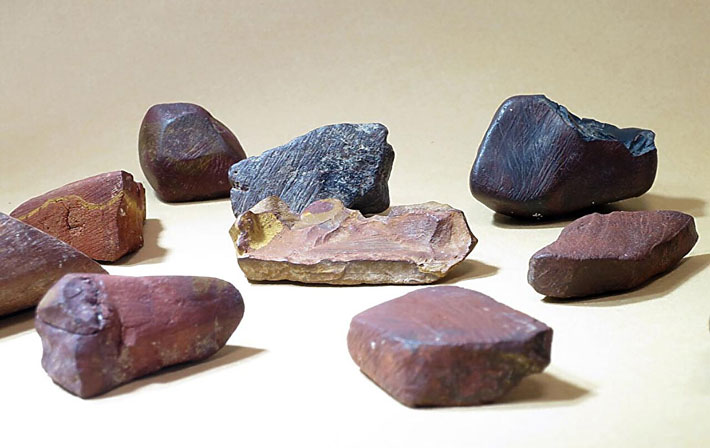 VALENCIA, SPAIN—According to a statement released by the University of Valencia, an international team of researchers led by Daniela Rosso of the University of Valencia has analyzed a collection of ocher recovered from Ethiopia’s Porc-Epic Cave. The more than 4,000 pieces of red and yellow pigments from the site, where they were in use for at least 4,500 years, have been dated to about 40,000 years ago. Ocher processing tools and two ocher-stained artifacts have also been uncovered in the cave. The study suggests that the techniques used to produce these different pigments were gradually modified over time. Lower-quality red ocher rich in hematite, for example, was found throughout the layers of the site, while rare, fine-grained red ocher rich in iron oxides was ground primarily at the beginning of the site’s occupation. However, the presence of lower quality, coarse ocher powder rich in quartz increased over time, perhaps because of a change in symbolic or functional purposes, or an increasingly limited access to iron-rich sources, the researchers explained. Read the original scholarly article about this research in Scientific Reports. To read about Ethiopia's ancient empire of Aksum, go to "Africa's Merchant Kings."
VALENCIA, SPAIN—According to a statement released by the University of Valencia, an international team of researchers led by Daniela Rosso of the University of Valencia has analyzed a collection of ocher recovered from Ethiopia’s Porc-Epic Cave. The more than 4,000 pieces of red and yellow pigments from the site, where they were in use for at least 4,500 years, have been dated to about 40,000 years ago. Ocher processing tools and two ocher-stained artifacts have also been uncovered in the cave. The study suggests that the techniques used to produce these different pigments were gradually modified over time. Lower-quality red ocher rich in hematite, for example, was found throughout the layers of the site, while rare, fine-grained red ocher rich in iron oxides was ground primarily at the beginning of the site’s occupation. However, the presence of lower quality, coarse ocher powder rich in quartz increased over time, perhaps because of a change in symbolic or functional purposes, or an increasingly limited access to iron-rich sources, the researchers explained. Read the original scholarly article about this research in Scientific Reports. To read about Ethiopia's ancient empire of Aksum, go to "Africa's Merchant Kings."
Study of Ocher From Ethiopia Detects Changes in Technologies
